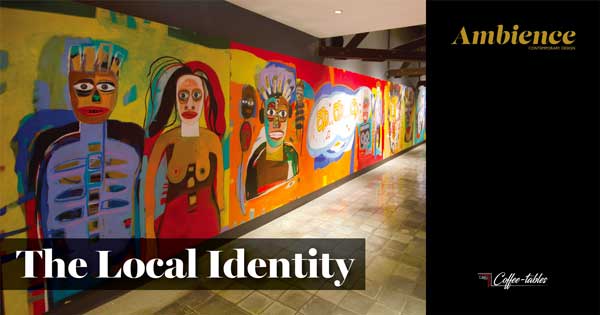Upholding cultural integrity in an age of contemporary thought
Channa Daswatte in conversation with Lashani Ramanayake
At the suggestion of his zoology teacher that he pursue a career in architecture, Channa Daswatte made a decision to become an artist, designer and architect. Daswatte’s penchant for transforming spaces and decorating – together with his interpretation of the Sri Lankan identity – feature in his projects, which provoke an observer’s thinking and elicit a definite response
Q: How important is it to engage local talent in architecture?
A: It’s very important to do so in an age of rampant globalisation where most contemporary buildings imitate each other and often lack ingenuity. It’s vital to involve local artists and craftspeople in architecture to enhance the local identity of a space.
A concerted effort is needed to engage with local people for a broader base, which in turn contributes to economic development as well.
Q: What other benefits do such partnerships bring?
A: The inclusion of art in our buildings facilitates the conversation of who we are as Sri Lankans.
Art provides a medium to ask questions that need to be asked but can’t be spoken about in conventional terms. It makes you aware of what is around you, not simply through its beauty but also as a result of the insistent questions that art and sculpture evoke.
Q: The state of artisanal crafts in modern architecture is…?
A: Traditional art is fading away from the consciousness of Sri Lankans. The lack of usage and investment in these practices have virtually eliminated its presence from contemporary architecture.
Lacquered work is a rarity these days; it is mainly practised in only one village in the whole of Sri Lanka. Previously, early modernist architect Minnette de Silva used it in many of her modern houses for various screens, balusters and other elements.
As artists and architects, we need to take a stand against this erosion. We need to encourage young artists to find new ways of using traditional designs in their work. This would create a sustainable environment for the arts and preserve our unique artistic identity.
Moreover, incorporating the sustainable practices of our past is a small contribution to extending the life of our planet. Beautiful work can be accomplished by using a variety of new materials that are available to us; but this mustn’t be done at the cost of forgetting the richness of our past.
Q: So how have you integrated these concepts in your latest project?
A: My latest project is the renovation and extension of a prominent beach hotel in Sri Lanka. We have conserved and restored the central section built by Geoffrey Bawa in 1967, and added an area that is contemporary in style.
Local talent in this project includes handloom fabrics cascading across high ceilings reminiscent of the 1960s and commissioning local artists to create paintings for all the rooms.
Creating a story between people, the hotel and our history is very important, which is why I continue to introduce new artists and local craftsmen to sharpen the discourse on what I’m building – and communicate the story of who and where we are.
